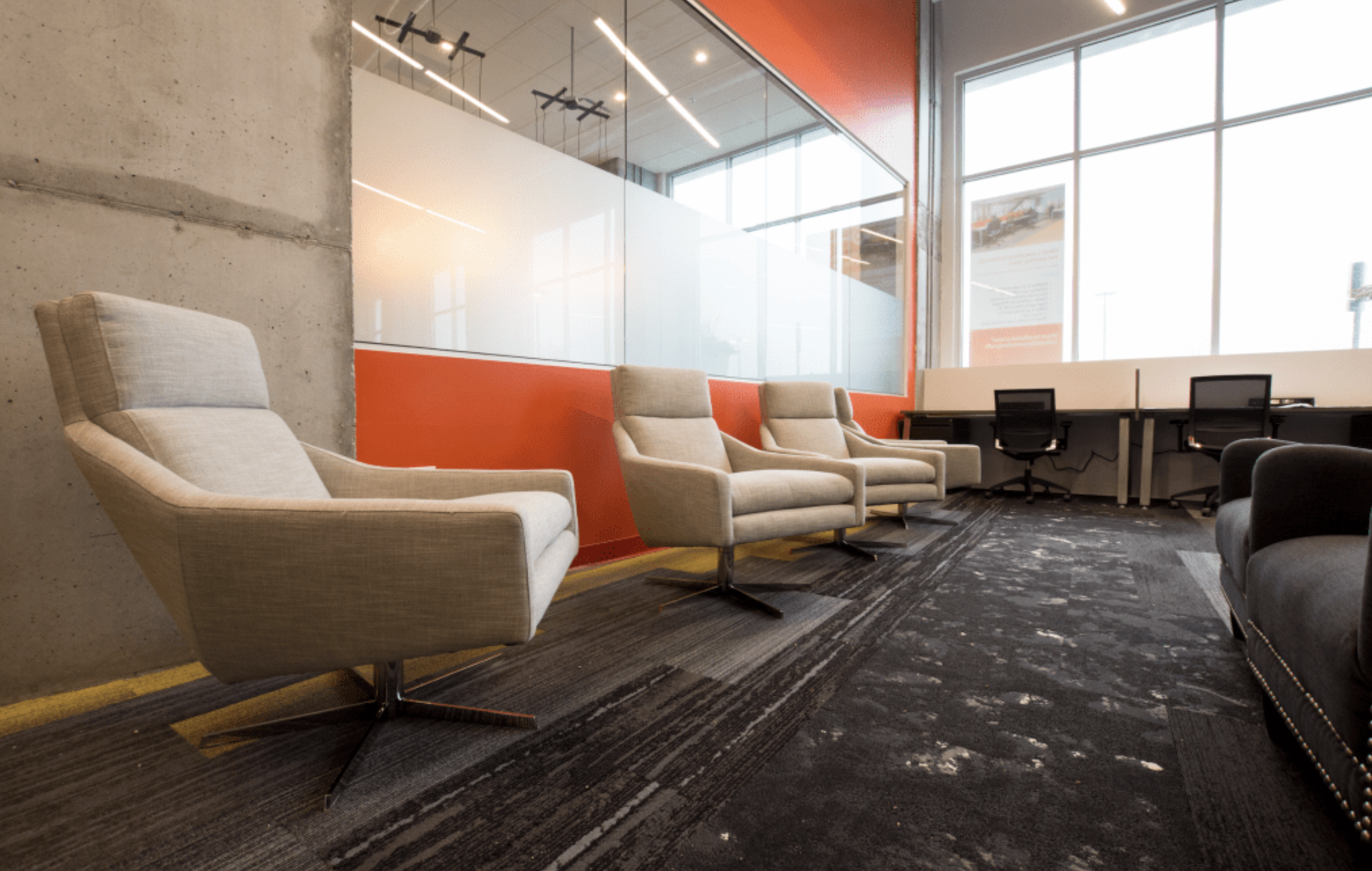5 Elements of Successful Coworking Space Design
The “secret sauce” of exceptional workspaces.
If Coworking was solely defined by mugs of small-batch coffee on desks, glowing faces over open laptops, and fast Wi-Fi in a big room, there’s not much to differentiate a designed flex workspace from your neighborhood’s new coffee shop.
So, what, exactly, is the secret sauce that has made Coworking the global phenomenon that it is? And what makes an individual workspace successful? Why do coworkers, who otherwise might stay at home in their pajamas,** keep coming back for more?
In the workspaces we design, our measure of success hinges on these questions:
Did you interact with someone that you’d like to continue a conversation with?
Were you comfortable and productive?
Did you leave more motivated than when you arrived?
This is the invisible energy, the meaningful stuff — the “dark matter” — of coworking.
A coworking space can put as many resources as it wants toward ethernet connections and presentation monitors, but if they don’t facilitate collaborative exchanges daily, they’re dead in the water.
Culture, programming, and business services are all active investments in a successful, community-based model; however, there is another, subtler asset at work that encourages and balances these organic interactions:
workspace design.
**Not that there’s anything wrong with “day pajamas”
5 Elements of Coworking Space Design that Change the Way We Work
1. SHARED SPACE TO INTERACT.
At its most basic level, a coworking space provides somewhere else, outside of the home, where serendipitous interactions can occur. But these interactions don’t always happen in open flexible coworking space or event space — just as many introductions and chance meetings happen in kitchens and stairwells.
Designing these less-obvious elements of shared space is key to enhancing these social collisions: thoughtful design encourages utilization. For example, including branded messaging as elements of interior design invites users to pause there because they know that the space has been purposefully considered as an occupied place — not simply a thoroughfare.
25N’s Coworking’s Community Calendar is strategically placed near the coffee bar & kitchen as an ever-changing, interactive, conversation starter.
2. PRIVATE SPACE TO FOCUS.
The “Yin” to the shared space “Yang” is private workspace — a must-have for balancing an otherwise stimulating environment. At 25N Coworking Geneva, two open flex spaces with traditional office furniture are balanced by seating areas that include sofas and/or non-traditional surfaces and lighting that are suited for diverse work preferences.
With two floors of space to work with, we created a variety of work zones, nooks and crannies. Depending on the project or task at hand, one can be in the mix of the buzz or tucked away for heads-down work.
Portable privacy screens and adjustable desktop chairs in 25N’s Flex Space provide coworkers with a distraction-free work zone.
3. CUSTOMIZED MEETING EXPERIENCES.
When the serendipity has worked its magic, or an idea has been ignited, coworkers need space to close the deal or execute the project. Here’s where a good-old-fashioned meeting room comes in — with a twist. We’ve established that a diverse community calls for diverse workspaces, and the same goes for the spaces in which planned sessions occur.
Successful meeting room design depends on providing a variety of options that cater to different objectives. For example, 25N’s Ideation Vault includes modular desks that allow custom configurations: perfect for workshop sessions that balance presentations with group work and collaboration. For meetings that require intimate discussions and a stellar first impression, 25N provides its conspicuous Third Street Meeting Room, which boasts eye-catching, comfortable furniture and an impressive wall of windows.
Select 25N Meeting Rooms, like Arlington Heights’ Meeting Room for your next conference, are made to impress.
4. INTENTIONAL FLOW.
Coworking spaces also owe their coworkers easy, intuitive wayfinding — that is, it should be easy for coworkers to move from zone to zone, private to shared space, with minimal interruption and minimal frustration. This can be as simple as clean paths through furnished areas or target lighting to highlight social spaces. And this doesn’t only apply to interiors; exterior signage and cues that funnel traffic to the entrance are crucial to efficient time management and positive first impressions on both prospective new members and, more importantly, the constant influx of clients of current members who visit a coworking space to meet.
“Successful meeting room design depends on providing a variety of options that cater to different objectives.”
5. WELCOME INTERRUPTIONS.
Coworking spaces can also leverage opportunities to interrupt the “flow” of a space.
Much like a rest area on an interstate, interruptions in flow don’t interfere with the overall circulation, but provide opportunities for coworkers to “pull over” and develop productive conversations with potential collaborators. For example, designers noticed that coworkers at 25N Geneva seemed to congregate around the corners of built-in counters in Geneva’s café/hub space, so 25N’s second location, Arlington Heights, includes an oversized island with extra corners to maximize the effect.
Well-placed seating at 25N Arlington Heights office spaces invites spontaneous conversation and the chance for private office coworkers to mingle in flex space.





